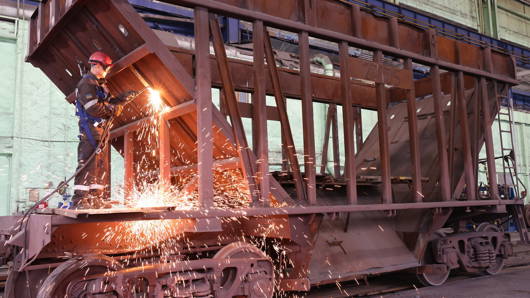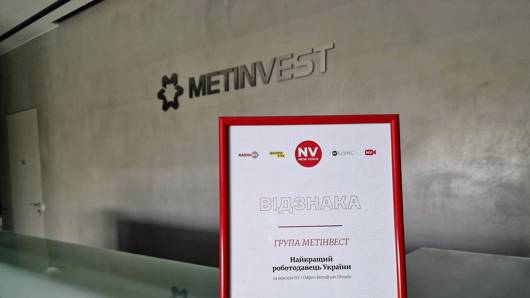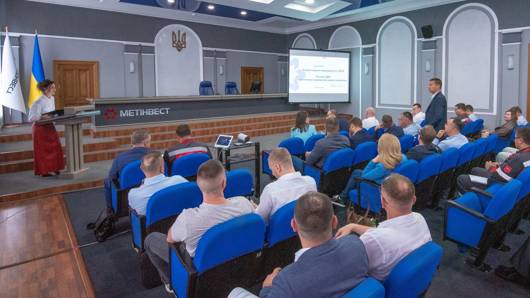Marc Champion, a columnist for Bloomberg, a leading US outlet covering events worldwide, recently visited Metinvest Group’s Pokrovske Coal, in Pokrovsk, a city on the front line in Ukraine. In an article on his visit, he shares his impressions and key conclusions about possible scenarios for Ukraine.
Donald Trump says he can end Russia’s invasion of Ukraine in a day, and he will soon be in the White House to prove it. It is not impossible, it just depends on which day. But short of capitulating to Moscow, the dramatic resolution that he wants is conceivable only if he starts laying groundwork now and drops his fanboy approach to Vladimir Putin.
Trump had Elon Musk sit in on a phone call with Ukrainian President Volodomyr Zelenskiy last week, and has now ruled out inviting one of the few people in his orbit with foreign policy experience – former secretary of state Michael Pompeo – into his cabinet. According to the Washington Post, they talked about issues of territory in a phone call with the Russian president. None of these are good signs.
Trump and his team need to rethink what winning and losing in Ukraine would mean, and they have time if they are willing to use it. Because to give Moscow what it wants out of ignorance would represent a historic failure that stores up deep trouble for Europe, the US and possibly Taiwan, let alone Ukraine.
Trump should, for now, try to stay off the phone to the Kremlin. The Washington Post said he also asked Putin not to “escalate” in Ukraine. At this point in the war, what does that even mean? Instead, he should send a competent envoy to Ukraine to understand why the Ukrainians are so resistant to a quick “at any costs” ceasefire, and why working with Kyiv is in US interests.
When such an envoy gets there, I would suggest heading straight to the mine that I just visited outside Pokrovsk, the town in the eastern Donbas region that has become the hottest focus of the war.
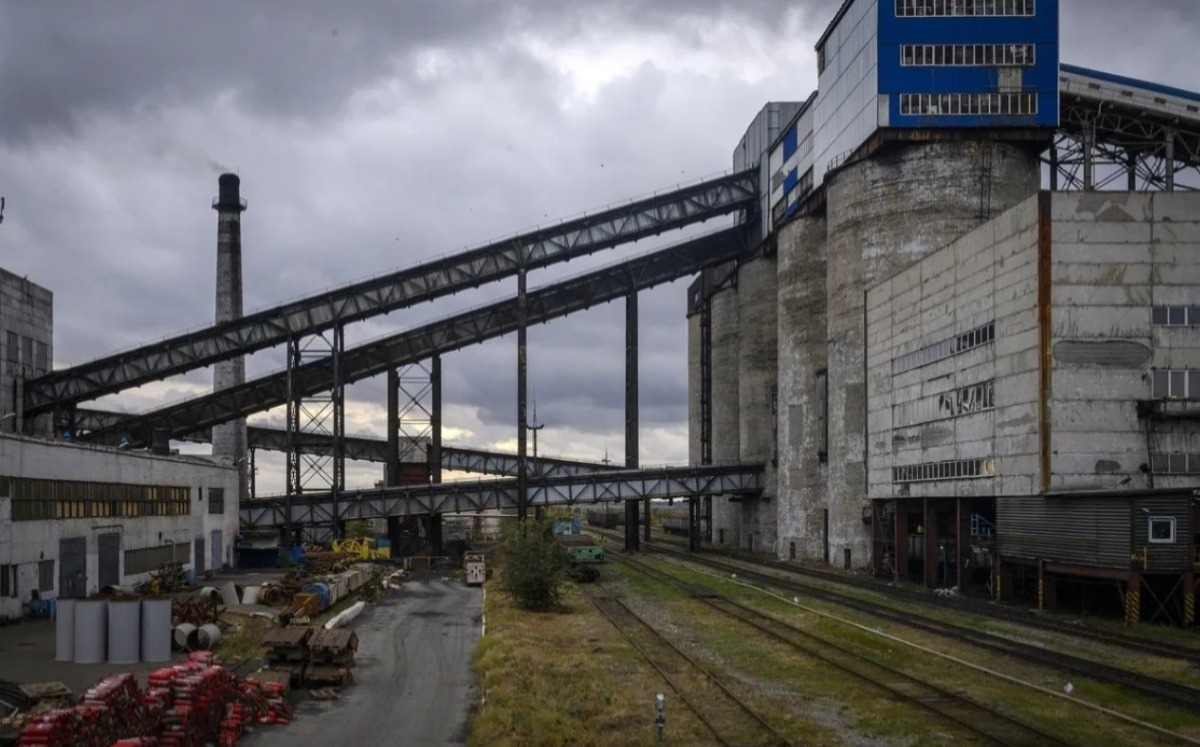
Conveyor belts carry coking coal to storage silos at Metinvest BV's Pokrovske mine near Pokrovsk, Ukraine on Friday Oct. 25, 2024. Photographer: Christopher Occhicone/Bloomberg
Pokrovske Coal is the only enterprise in Ukraine that produces coking coal, the essential ingredient used in the steel production process. One of its three shafts is now less than seven kilometres (4.3 miles) from the front line. If it stops operating, steel companies in Ukraine – including the mine’s owner Metinvest Group – would have to import coking coal, which the European Union lists as a critical raw material. The increased cost of coal would make an estimated 50% of the country’s current steel production non-competitive. This is the same steel that supplies Ukraine’s growing defence industry and will be vital to reconstruction after the war.
Russian missiles have already hit Pokrovske Coal, yet it continues to operate. With troops and artillery closing so quickly, Metinvest chief executive officer Yuriy Ryzhenkov must strive for an instant ceasefire as much as anyone, inside Ukraine or out. Yet even he told me that should not happen until the terms of a deal would create “a definitive end to the war”.
That is because the Group, which lost its largest steel plants in Mariupol in 2022, cannot invest if whatever gets built is likely to be quickly destroyed, or have its output blockaded at Ukraine’s sea ports. And if Metinvest, one of Ukraine’s largest companies, will not put more money into the country, it is fanciful to imagine foreign companies piling in. How can you rebuild under such conditions? Or persuade the millions of refugees who have found ways to make a living abroad to come back?
This is the essential message that Trump’s envoy needs to take home. The White House, the rest of the North Atlantic Treaty Organization and Western media need to stop measuring victory or defeat in terms of Ukraine’s ability to recover the territory that Russia has seized. Ukrainians made that mental shift long ago, after the failed counteroffensive in 2023. Winning is no longer a question of getting all the land back, but of guaranteeing the security that Ukraine needs to emerge as an economically viable independent state.
Russia understands this, too. Its strategy is to prevent such a Ukraine from materialising. For Putin, issues of territory, while important, are secondary to his original war aims. He still wants to “de-nazify” Ukraine, that is, replace its leader with a Russian client; and he still wants to “demilitarise” it, meaning to make it incapable of defending itself from future attack, should Kyiv ever again fail to bend to his will. He will compromise only if he is on the back foot on the battlefield, which is not the case right now.
Russia’s president might well say yes to a Trump insta-deal that halts the fighting along current battle lines, even if that would not yet give him full control of the four regions that he claims, or his demands for NATO to shrink back to its size in 1997. He will surely ask for more, because he feels that he holds all the cards. But all he really needs for now are terms that leave him free to break the pact and achieve his goals more easily later, against a largely disarmed opponent. This is the Trump “deal” that Ukraine fears most.
It has happened once already, after all, when Putin violated a 2015 ceasefire to invade in 2022. That is the reason Ukrainians keep fighting, despite the extreme cost and even though it is clear that they cannot roll Russian forces beyond the state borders. To see them as obstacles to any genuine peace is at best a display of profound ignorance.
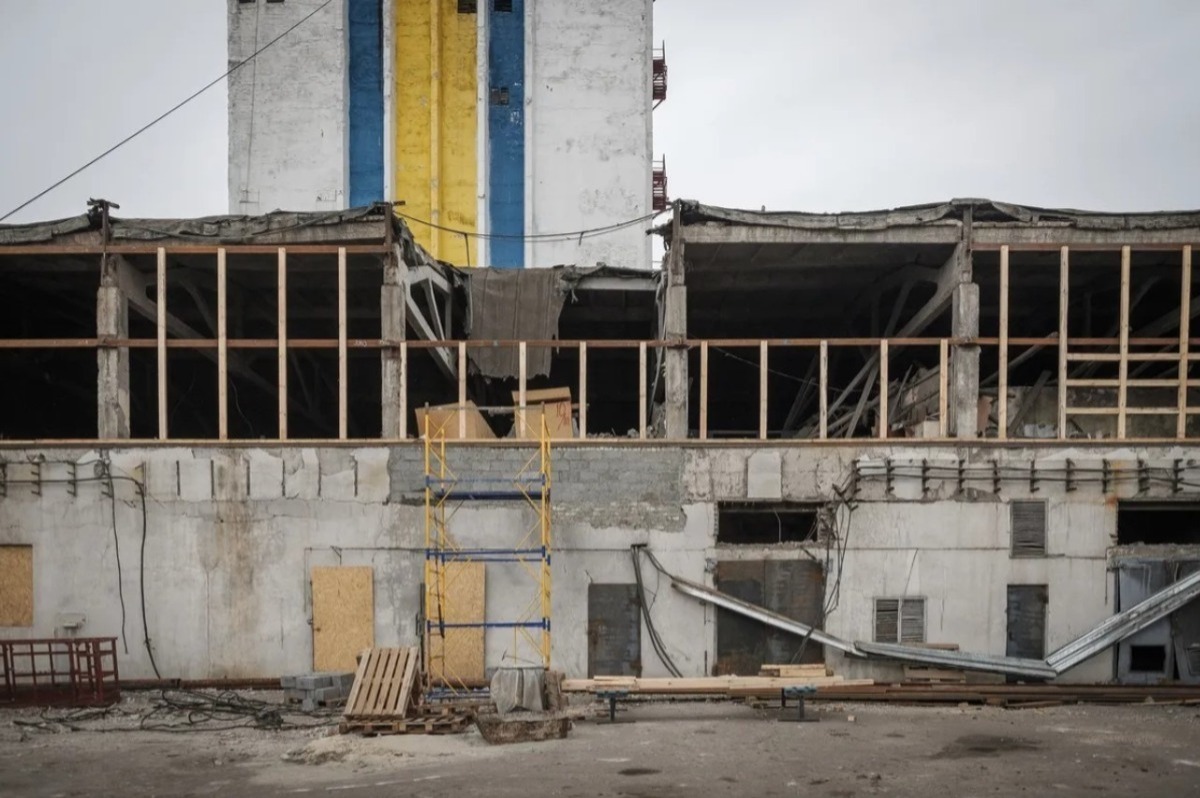
A Russian missile attack in September damaged this section of the Pokrovske coking coal mine. Photographer: Christopher Occhicone/Bloomberg
It is telling that there is nothing about territory in the five public points in Zelenskiy’s so-called victory plan. Four concern security, while one aims to show that Ukraine can provide something to its allies in return for their continued backing. This is the kind of language that Trump, with his transactional approach to foreign policy, can relate to. But he needs to act with a coherent game plan – something he is not known for – and with Ukraine in a stronger position than it is today.
Proposals being floated in Washington – such as one for a ceasefire line enforced by European peacekeepers and Ukraine abandoning its NATO membership aims for 20 years in exchange for US arms – have elements that could form part of an eventual solution, but are half-baked and premature. The stakes are too high for this.
A compelling point, but rarely said in polite Kyiv society, is that if the West does not step up to ensure Ukraine’s independence, Europe’s geopolitical situation will be fundamentally altered for the worse. I have talked about some of the possible costs elsewhere. One risk is that a defeated Ukraine’s natural, agricultural, human and military resources would go to strengthen a vengeful Putin, as he pursues a zero-sum contest with the West that he will continue no matter who is in the White House.
“Does the West not understand that if Russia isn’t defeated in Ukraine, it will eventually win and then all of our resources – including our army, our drones and our defence industry – will be used to fight you. We won’t want to, but we will end up fighting you,” says Roman Motychak, a Kyiv resident who works in renewable energy.
What Motychak says sounds hyperbolic, but it is neither inconceivable nor without precedent. Remember, most people – especially Putin’s admirers – also dismissed US predictions that he would actually invade Ukraine. The Chechens, meanwhile, fought two brutal wars of independence against Moscow in the 1990s and early 2000s. Since their defeat, they have provided Moscow with some of its best-trained shock troops, including for the war in Ukraine. Men who remained in Russian-occupied territories of Ukraine also have been forcibly mobilised to fight their erstwhile compatriots.
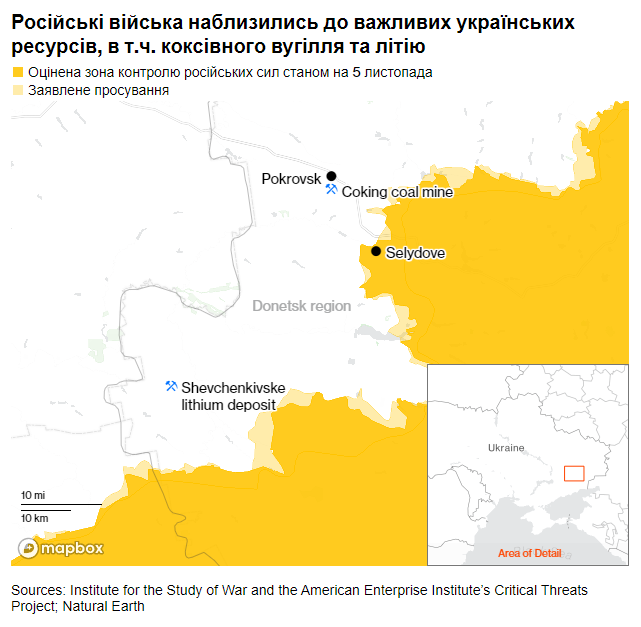
There are other Ukrainian resources that might be turned against the West by Russia and its partners, including China. These include the large coterie of software engineers who have been a driving force behind the world’s most prolific and innovative drone industry. The country also has natural gas deposits (and massive storage facilities for it), lithium, rare earths, titanium and uranium, not to mention Pokrovsk’s coking coal.
The lithium may prove a valuable resource for European carmakers if the current slump in demand for electric vehicles and their batteries revives. Of Ukraine’s four significant deposits, two are west of the Dnipro river and relatively safe for now. A third, near Ukraine’s Azov Sea coast, is already under occupation. The last – called the Shevchenkivske deposit, after the nearest village – holds an estimated 350,000 tonnes of lithium ore. It is situated 60 kilometres south of Pokrovsk and just 20 kilometres from the front lines. The European Lithium Institute estimates total European reserves of the metal at 8.8 million tonnes.
How then should Trump and his team think about ending the war? A hasty ceasefire deal cut on Putin’s terms would only contribute to future instability. Ukraine would become a financial black hole swallowing European and – like it or not – US support. The country would attract no investment and become economically unsustainable. Eventually, Russia would decide to finish what it started, leaving Trump looking less than a deal-making genius.
Many in Trump’s camp believe that the US has few interests in Europe and can safely walk away from Ukraine altogether. This is naive. Add Russia’s deep alliance with US foes in Asia and the Middle East – a then isolationist US tried to stay out of the two world wars that began in Europe, but was forced to fight both – and that should be clear. It was, after all, an attack on the US by Germany’s Asia ally, Japan, that drew America into World War II.
In contrast, given a settlement that provides genuine security, Ukraine could serve as a back office for the West, as well as a route for countries to shorten their supply lines in this age of deglobalisation – much as Poland, Hungary and countries did on joining the EU 20 years ago.
More importantly, a financially viable Ukraine would become a defensive buffer for Europe against further Russian destabilisation efforts in the region. This is more than a geostrategic consideration. The country is now extremely dependent on foreign military aid, but if a sustainable ceasefire is achieved, it could also contribute materially to the defence of the West.
Back in 2021, Ukraine produced no ammunition and had total arms production worth US$755 million. This year, it was Europe’s largest producer of ammunition. Over breakfast in Kyiv, I caught up with Oleksandr Kamyshin, Zelenskiy’s adviser for strategic affairs and, until September, the minister in charge of Ukraine’s defence production, to understand the bigger picture.
Today, Kamyshin said, Ukraine’s increasingly private defence industry has the capacity to produce US$20 billion of arms a year, rising to US$30 billion in 2025. Facilities include the production of vast quantities of drones, as well as ballistic missiles with ranges up to 1,500 kilometres.
What is holding Ukraine back is a lack of government orders, meaning cash from Kyiv’s budget. The industry, for example, can make up to 200 missiles a month, capable of reaching the airfields from which Russia launches the planes that drop devastating glide bombs on Ukrainian troops. Yet, there is only enough money for Kyiv to make a few of them. It is a widespread problem. This year, the government will have ordered US$8 billion in contracts for everything from ammunition and artillery pieces, to drones and ballistic missiles. Next year, that budget will be US$10 billion, just a third of what the country will be capable of producing and sending to the front.
This has major implications for US policy. Ukraine, for example, has long begged for permission to use US-made ATACMS missiles against targets in Russia. But this controversy is out of date. The Russian air force has by now moved its combat jets to airfields beyond the 300-kilometre range of ATACMS. Ukraine’s ballistic missiles, however, can do the job. The issue today is money for Ukraine to make missiles, not ATACMS.
Denmark has taken the lead in a Scandinavian initiative to address the problem. In July, Copenhagen ordered and paid for Ukraine to produce 18 Bohdana self-propelled 155-mm howitzers. In September, they were delivered to the front. It is the kind of assistance that Trump should encourage if he truly wants the rest of NATO members to be able to defend itself, rather than rely on the US. So long as Kyiv’s defence industry remains out of Russia’s hands, a post-war Ukraine can provide not only much of its own security against possible invasion, but also the high-volume, lower-cost equipment and ammunition to European NATO members.
At this moment, however, Pokrovsk and Ukraine’s frontline soldiers do not have the luxury of time for Kyiv to develop a world-class defence industry. So, Zelenskiy’s victory plan envisions a surge of Western military aid to help Ukraine to stabilise the front, forcing Putin not to move further due to the risk of losing gains.
What might that look like? More Ukrainian-made but Western-funded drones and missiles inflicting damage on Russian airfields and arms depots. These can disrupt the flow of bombs and artillery that are pounding Ukrainian positions until they are forced to retreat. The additional long-range weaponry can also increase the pace of attack on Russian oil refineries and energy infrastructure, just as Moscow is doing to Ukraine with help from Iran and North Korea. That formula of a stabilised front line, combined with rising cost to Russia’s economy is the best chance to bring the Kremlin to the table for a genuine negotiation.

Some issues of territory do need to be on the table in any peace talks. For one, Pokrovsk’s coking coal needs to remain in Ukrainian hands. To improve the investment climate, Ukraine’s sea ports and the Dnipro river must also be safe from attack and open for business, says Tomas Fiala, chief executive officer of Dragon Capital, Ukraine’s largest investment bank. For that to happen, Russian forces cannot remain on the Kinburn spit, just south of Kherson, which faces the mouths of the Dnipro and the Bug, where the main port of Mykolaiv has been blocked since the start of the war.
The Zaporizhzhia nuclear plant, further up the Dnipro, also needs to be returned to Ukraine, for reasons both of safety and its six gigawatts of power. Russia cannot use it without hideously expensive reconstruction, due to both degradation during the war and the conversion of its controls and systems by the US’ Westinghouse Nuclear, Petro Kotin, the head of Ukraine’s nuclear power company Energoatom told me. Ukraine, on the other hand, desperately needs Europe’s largest nuclear plant back online.
Still, Fiala says the most important thing is that “the war has to finish and there have to be security guarantees that it won’t be repeated any time soon”. If that happens, Ukraine may in some ways be in a better situation than before the war. It will enjoy largely tariff-free access to EU markets and a membership process that could transform the economy and state.
Nobody says this would be easy. Putin has his own agenda and, ludicrously, claims that he needs to win in Ukraine for Russia to continue to exist. Yet, there are opportunities for negotiation. Trump will have carrots to offer as well as sticks, including lifting sanctions and releasing frozen Russian funds. The Kremlin would fiercely resist NATO membership for Ukraine, but that is not a hill that Trump – already a sceptic of NATO’s value – has to die on. So long as “demilitarisation” is not part of the package, there are other ways to provide security for Ukraine on the models of Israel or South Korea.
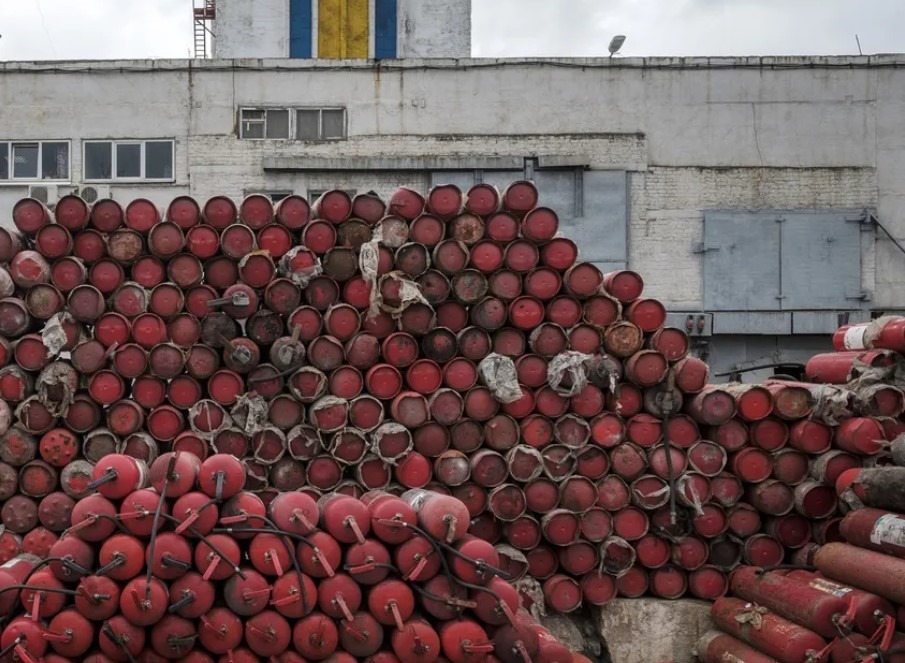
Putin, however, will not stand still. Pokrovske Coal’s chief executive officer Andriy Akulich said there were three missile strikes on the facility in September and October. About 1,200 staff out of a pre-war total of 8,000 have been mobilised to fight, with 106 killed and 274 wounded. Many moved away since the Russians redoubled their offensive, but 3,500 continue to work. A September blast killed two workers in the offices above the main shaft, both women, and blew debris down the stairs to the elevator. Another, in October, hit the mine’s electrical substation and bus depot.
From the surface, it is a 600-metre (almost 2,000-foot) drop to 300 kilometres of connected tunnels below. Management has since moved the lift controls for all three shafts to the bottom. Underground, I walked to reach one of the longwall coal faces along a tunnel that ran three kilometres toward the front, where the fighting rages above.
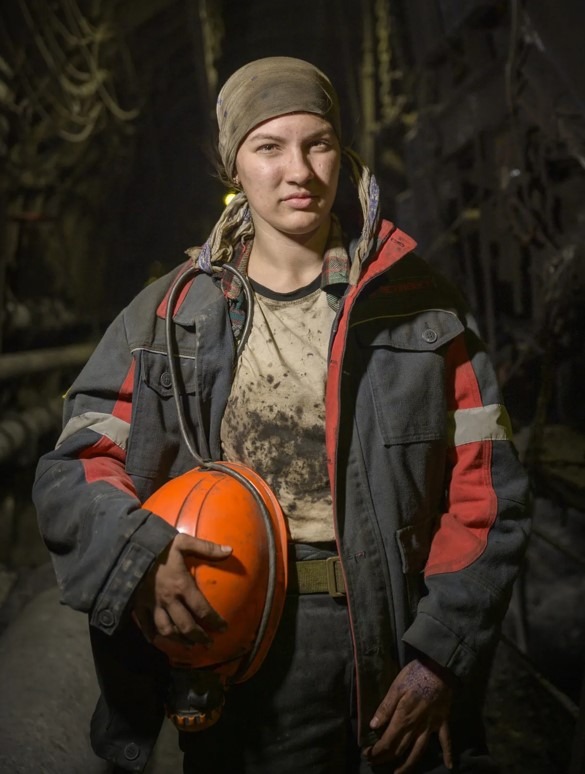
Krystyna Boyko, 19, last month, 600 meters underground. She joined the mining operation in the summer and one day hopes to run a travel agency.Photographer: Christopher Occhicone/Bloomberg
Miners continue to drill in three 500-person shifts, receiving double “combat” pay. For Oleksandr Zheltyakov, the foreman in charge of 26 men at the face I visited, that amounts to roughly triple the average Ukrainian salary. The miners are no strangers to war operations: they’ve dug many rows of trenches behind defensive lines to help slow the Russians. Some have already been overrun.
For some at the coal face, like 44-year-old Vadym Trotskiy, who wore a khaki “I am a Ukrainian” t-shirt, this is also about patriotism. But for the most part, he and others said they want the work and need the money. Trotskiy has to pay rent for his family, whom he has sent to the relative safety of Odesa, on the Black Sea coast.
Mykhailo Chulkov, who dynamites rock in the tunnels, recently moved with his family to a village west of the mine, from their home in Selydove, 20 kilometres east. That small town was being overwhelmed as we spoke. Unverifiable reports emerged later that day that Russian forces had killed two Ukrainian women who stayed behind.
Despite the fighting, people are still applying for work. Khrystyna Boyko, a 19-year-old student, joined the mine just three months ago. The high salary will help pay for the online university studies that she needs to pursue her dream of opening a travel agency. One day, she hopes to send Ukrainians abroad and bring foreign tourists to Ukraine.
Perhaps she will. But with his dramatic re-election, Trump now has the power to destroy Khrystyna Boyko’s youthful dreams, Ukraine’s economy and independence, as well European security. This, tragically, seems the most likely outcome, and yet he does not have to. Trump does not actually need to do much to ensure that he and Ukraine are in a stronger negotiating position after he is inaugurated. For that, he can thank [outgoing] US President Joe Biden, who has said he will push through the rest of the US$5 billion that he authorised for Ukraine by the end of his term. That is a surge of about US$1.5 billion a month that Trump does not even have to approve.
All the incoming president needs to do is hold tight while he develops a clear plan to help to stabilise the front, encourage Europe to overmatch the US effort, and project a message of strength and commitment that his friend in the Kremlin takes seriously. It is up to him. The Kremlin, Beijing, Tehran, Pyongyang and US allies around the world will be watching his every move.







